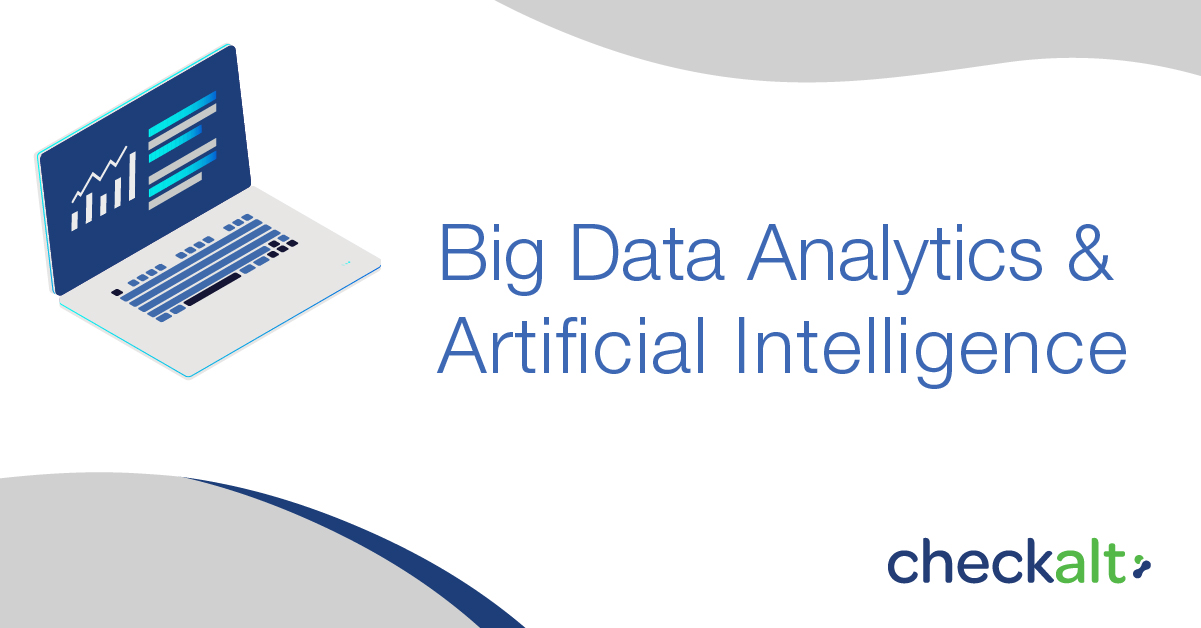2025’s Top Insights: AI, Fraud, and Receivables Modernization
The Top 5 Most-Read Articles of the Year 2025 offered clear insight into what our audiences valued most: practical AI adoption, stronger fraud...
3 min read

Big data analytics (BDA) and artificial intelligence (AI) are about understanding patterns, predicting outcomes, and improving processes. These revelations can improve customer experiences as well as reduce costs for financial institutions in myriad ways.
Almost all of us already have AI in our everyday lives. There are two ghosts that live in our home, and our little dog, Pietro, is absolutely terrified of them. Their names are Alexa and Siri. Every time Alexa or Siri respond to one of our questions or commands, Pietro gets out of his comfy bed and runs into the other room. What he doesn’t realize, of course, is that they become more powerful with each passing month. Today Alexa controls not just some of our deliveries, the front doorbell, news and weather reports in addition to music in our home, but the lights, too! Try saying, “Goodnight Alexa” and listen to what happens.
As the Internet of Things and AI become even more of a presence in our lives, it is also affecting the neobank and challenger financial services industry in a very positive and exciting way. Challenger banks are small retail banks that compete with legacy banks and credit unions. A neobank is a bank that only exists online. Digital banks are the online counterparts of an existing financial institution, or legacy bank.
Financial institutions without (or with only a minimal) physical presence have significantly less overhead compared to legacy banks. However, as I pointed out in a recent post, “Connecting In-Person and Digital Experiences at the Branch,” almost 95% of Americans use bank or credit union branches and almost 50% of Americans go into a branch at least once a month. So, even though digital banking options help financial institutions lower overhead expenses, it still may be wise to evaluate your branch/digital integration and not ignore the importance of branches.
Legacy banks and credit unions that have always competed with each other are now competing with challenger banks and neobanks with customers who are quite comfortable with an online-only presence. If legacy financial institutions don’t take advantage of the new options in the AI and digital space, they will have trouble competing, because the neobanks are already doing it. Credit unions and legacy financial institutions that have been slower to upgrade dated systems and utilize this new technology should pay close attention and act on the opportunities that smaller and perhaps nimbler online-only neobanks and retail “challenger” banks are implementing.
1. Understanding Patterns. Data helps predict the chances of a borrower’s loan default based on social information—how many locations they consistently travel to, or how diverse their social network is. BDA can also calculate when a certain manager is likely to quit. Understanding patterns can help financial institutions head off “likelihoods” before they become “problems.”
2. Predicting Outcomes. Utilizing pattern information, AI tools can understand if a consumer is under financial stress, is saving for a big purchase, or is creating risk exposure for the financial institution. These micro moments are opportunities for financial institutions to reach out, engage, and advise consumers for a better experience and outcome.
3. Improving Processes. One of the important developments happening in the banking industry is utilizing AI for improved customer service. AI chatbots answer questions and solve problems in a conversational way that is referred to as “conversational banking.” By creating a chatbot that can interact with customers in a way that mimics a live person, banks can save money by reducing their customer service personnel while simultaneously helping customers 24/7 and creating a feel-good method to achieve a positive result. Your bank becomes that friend who always has your back.
Happy customers are loyal customers. In 2016, Bank of America announced its AI-powered chatbot “Erica.” This morning, Erica texted my partner with an alert that he had a new credit score. How helpful! He logged on the Bank of America smartphone app using his fingerprint, happy to receive this new information because, in his case, his credit score had risen. Erica also offered him his last month’s spending habits and offered him a new credit card based on his new score. He might take them up on it. Is he loyal to Bank of America? You bet, because Bank of America prioritized creating great experiences to foster positive customer relationships.
Without implementing BDA and AI, banks and credit unions risk being left behind. It could be due to a lack of funding, technology expertise, or other reasons, but those resources can be supplied by third party fintech partners.
Almost worse is that these financial institutions will continue to sit on highly valuable transaction data and never put it to good use. Legacy financial institutions can only make the digital experience human if they bring BDA and AI together, using technology to deliver the right information and message at the right time. Consumers are demanding those humanized digital experiences now. Don’t be like Pietro.
RECENT ARTICLES:
• Ensure End-to-End Security and Mitigate Risk Across the New Customer Journey
• It's Time... for Real-Time Payments Processing
• 6 Strategies for Credit Unions to Reduce Member Delinquency Rates

The Top 5 Most-Read Articles of the Year 2025 offered clear insight into what our audiences valued most: practical AI adoption, stronger fraud...

With Gen Z gaining financial independence, banks and credit unions face a generational inflection point. These digital natives—born between 1996 and...

ATM jackpotting is a threat to banks and credit unions in the United States. Here’s an updated guide on the risks and defenses for financial...